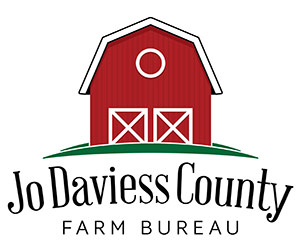Farm Facts
Fast Facts about Agriculture
2.2 million Farms dot America’s rural landscape. About 97 percent of U.S. farms are operated by families – individuals, family partnerships or family corporations.
Farm and ranch families comprise just 2 percent of the U.S. population.
More than 21 million American workers (15 percent of the total U.S. workforce) produce, process and sell the nation’s food and fiber.
Today farmers produce 262 percent more food with 2 percent fewer inputs (labor, seeds, feed, fertilizer, etc.), compared with 1950.
In 2010, $115 billion worth of American agricultural products were exported around the world. The United States sells more food and fiber to world markets than we import, creating a positive agricultural trade balance.
One in three U.S. farm acres is planted for export.
31 percent of U.S. gross farm income comes directly from exports.
About 23 percent of raw U.S. farm products are exported each year.
Farmers and ranchers receive only 16 cents out of every dollar spent on food at home and away from home. The rest goes for costs beyond the farm gate: wages and materials for production, processing, marketing, transportation and distribution. In 1980, farmers and ranchers received 31 cents.
U.S. farm programs typically cost each American just pennies per meal and for less than one-half of 1 percent of the total U.S. budget.
Americans enjoy a food supply that abundant, affordable overall and among the world’s safest, thanks in large part to the efficiency and productivity of America’s farm and ranch families.
Agriculture and the Environment
Careful stewardship by farmers has spurred a nearly 50 percent decline in erosion of cropland by wind and water since 1982.
Conservation tillage, a way of farming that reduces erosion (soil loss) on cropland while using less energy, has grown from 17 percent of acreage in 1982 to 63 percent today. At the same time, total land used for crops declined by 15 percent (70 million acres).
Farmers have enrolled a total of 31 million acres in the Conservation Reserve Program to protect the environment and provide habitat for wildlife. Since its inception in 1985, the program has helped reduce soil erosion by 622 million tons and restored more than 2 million acres of wetlands.
Farmers, ranchers and other landowners have installed more than 2 million miles of conservation buffers under farm bill initiatives. Buffers improve soil, air and water quality; enhance wildlife habitat; and create scenic landscapes.
Each year, hundreds of thousands of trees are planted on farmland.
More than half of America’s farmers intentionally provide habitat for wildlife. Deer, moose, fowl and other species have shown significant population increases for decades.
Through the farm bill, funding is provided to farmers and ranchers for conservation, for programs that prevent soil erosion, preserve and restore wetlands, clean the air and water, and enhance wildlife.
Crop rotation, the practice of growing different crops in succession on the same land, is another way farmers take care of the land.
For contour farming, farmers plant crops across the slope of the land to conserve water and protect soil.
Alternative energy sources, including wind power and renewable fuels such as ethanol and biodiesel (made from corn, soybeans and other crops) are beneficial to the environment and promote energy security.
Office Contact Information
212 N. Main St, P.O. Box 501
Elizabeth, IL 61028
Open Monday – Friday
8:00 – 4:30
815.858.2235
Manager – Annette Eggers
[email protected]
Office Manager – Stefanie Johnson
[email protected]
